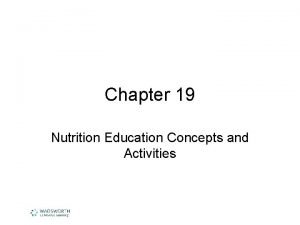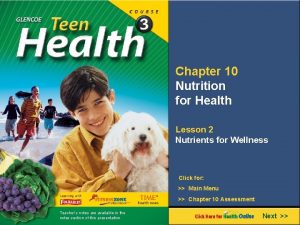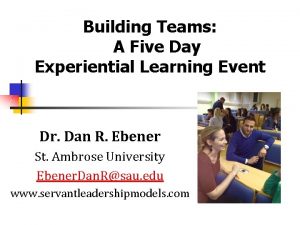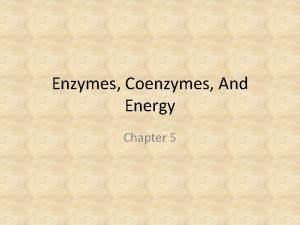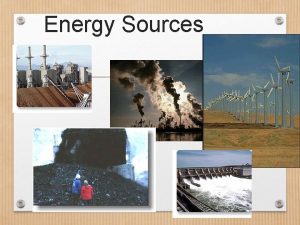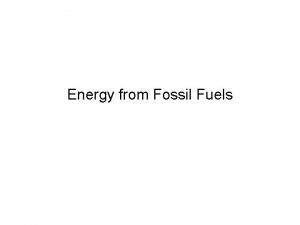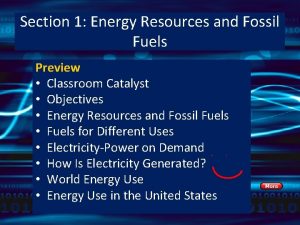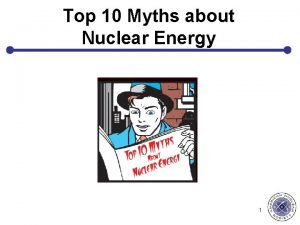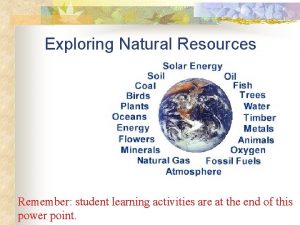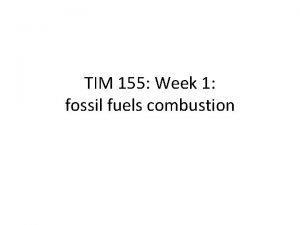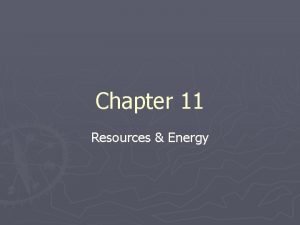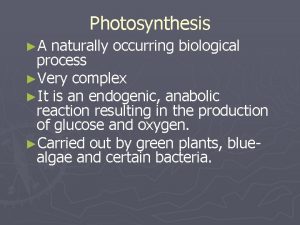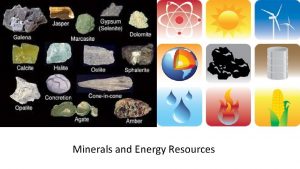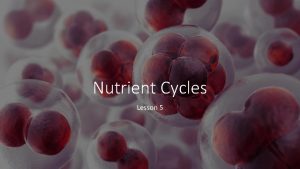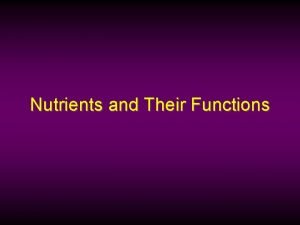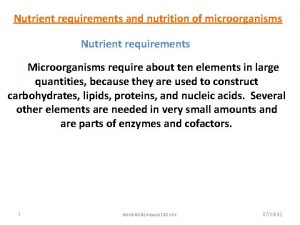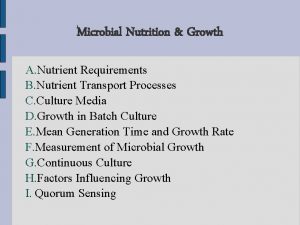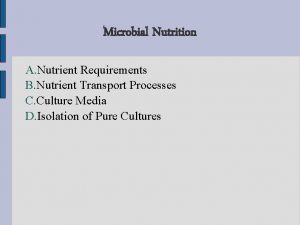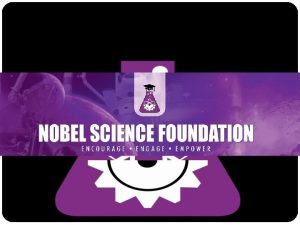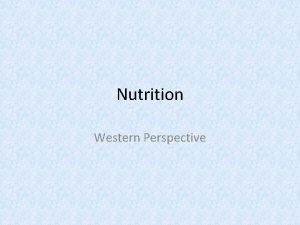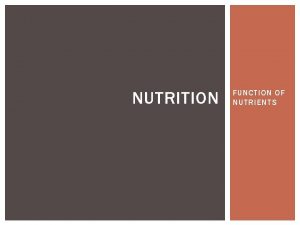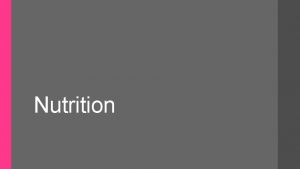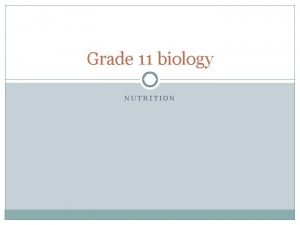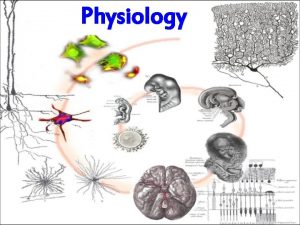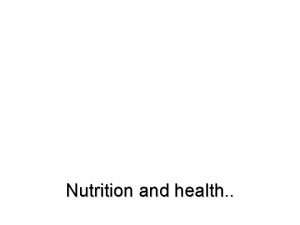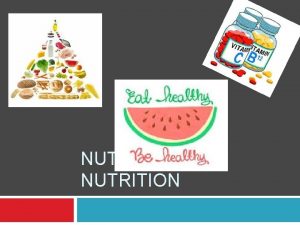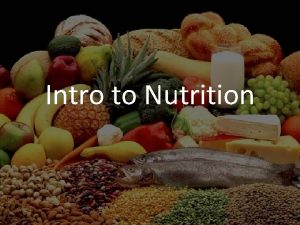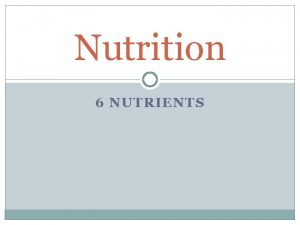Nutrition How Nutrients Work The Nutrient team fuels























- Slides: 23

Nutrition

How Nutrients Work The Nutrient team fuels your body and helps you grow. Nutrients repair the body and help maintain basic functions. There are 6 key nutrients: carbohydrates, proteins, fats, vitamins, minerals, and water.

Carbohydrates The body’s main source of energy Two kinds of carbohydrates: sugars and starches Sugars are simple carbohydrates Starches are complex carbohydrates- structure is more complex Most complex carbohydrates contain fiber- plant material that doesn’t break down when you digest food Fiber is good for the body in helping eliminate waste.

Examples of Carbohydrates Bread Rice Cereal Oatmeal Potatoes Apples Pears Honey Sugar

Proteins Used to build, maintain, and repair body tissues Made up of chemical compounds called amino acids. Amino acids are the body’s “building blocks” that help perform different and vital functions for the body The body can make most amino acids There are nine essential amino acids- supplied by food you eat; the body can NOT make them Food from animal sources are called essential complete proteins- fish, poultry, meat, milk products, eggs Those foods contain all nine essential amino acids

Proteins Plant foods are incomplete proteins- grains, dry beans, peas, nuts, seeds, vegetables They lack one or more of the essential amino acids When eaten in combination, incomplete proteins can form complete proteins Example: beans and rice You can eat incomplete proteins with a complete proteins Example: milk and cereal Best way to get amino acids: EAT A VARIETY of foods each day

Examples of Proteins Meat Poultry Fish Tofu Beans Nuts Milk Cheese Eggs

Question What is role of carbohydrates? Proteins? Why should you eat 3 -4 times more carbohydrates than proteins? Create snacks where you can combine complete and incomplete proteins ( 2 per table)

Fats Most concentrated form of food energy Provide substances for normal growth and healthy skin Helps make foods taste better Helps feel full after eating Dissolves some vitamins and carries them in the body where needed

Saturated Fats vs. Unsaturated Fats Saturated fats are solid at room temperature Found in animal foods such as meat, poultry, egg yolks, whole milk, tropical oils- palm and coconut Unsaturated fats are liquid at room temperature Usually vegetable oils Cholesterol- fat like substance that’s part of every cell in the body. It helps the body make necessary chemicals and aids in digestion Body manufactures all the cholesterol we need Physicians can measure cholesterol in our bloodstream; the higher it is the greater the risk for heart disease

Examples of Fats Butter Margarine Olive oil Vegetable Oil Sour cream Salad dressing Hidden Fats: meat, whole milk, cheese, bakery items, nuts

Vitamins Set off chemical reactions in the body Each one regulates different processes Their roles are specific- can not substitute one for another Body requires: 13 vitamins a day Copy Chart from pg. 396 and 397 in Notes Fat soluble vitamins: A, D, E, and K absorbed with the help of fats- getting too many can be harmful Water soluble vitamins: C and B- complex dissolve in water and are easily passed out of the body as waste Need frequent supply of those, but large doses can be harmful

Vitamin Examples Vitamin C- orange juice Vitamin A- carrots Vitamin D Vitamin E Vitamin K Folate

Minerals Have certain jobs they perform Essential for bones and internal organs Body requires: 16 minerals a day Calcium- extremely important as a teen– makes up bone and teeth structure Drink and eat dairy products to get calcium Copy chart on pg. 398 into notes

Mineral Examples Calcium Phosphorous Iron Sodium Potassium

Water You can live longer without food than water ½ to ¾ of the body weight is water Water carries nutrients to cells Carries waste from the body Helps regulate body temperatures Drink 6 to 8 glasses of water a day

Deficiencies in Nutrition When we don’t get enough nutrients, we have deficiency- shortage Symptoms could be: tired, difficulty sleeping, frequent colds, weight gain, weight loss More serious deficiencies could be: affecting body parts- skin, eyes, tongue, or bones Eat a variety of foods to avoid these deficiencies

Energy and Calories Food supplies the body with energy Energy is needed for breathing, pumping blood, and activities Calories- unit for measuring energy; measure energy we take from food and what the body uses up Age, activity level, and gender depends on the number of calories you need Getting more calories than your body needs can cause weight gain, while fewer can cause weight loss

Meeting Your Energy Needs Fats contain 9 calories per gram Carbohydrates and proteins contain 4 calories per gram Try to get 55% to 60% of calories from carbohydrates ( complex mainly) 15% from protein 30% or less from fats ( mainly unsaturated)

Nutrient Density The amount of nutrients in a food relative to the number of calories Potato chips, cokes, candy have low nutrient density Fruits, veggies, whole grains, lean meats, and low-fat milk have high nutrient density They supply proteins, vitamins, minerals, fiber, and other things contributing to good health.

Eating Habits Skip meals Grab quick snacks Eat fast food Buy food or drinks from vending machines How can we make sure to eat good nutritional foods?

Nutritional Choices Choose diets low in sugar- empty calories; no nutritional value Choose a diet low in salt-too much salt can lead to high blood pressure Be physically active for at least 1 hour a day Choose a diet low in fats and cholesterol

Game Time Team One: Fat- soluble vitamins Team Two: Water Soluble vitamins Have to name one to get a point and the other team can get a point if they can tell what it does in the body. Play to 6 points
 Agar
Agar Foods used in nutrition activities should be nutrient-dense
Foods used in nutrition activities should be nutrient-dense Chapter 10 nutrition for health
Chapter 10 nutrition for health Team vs working group
Team vs working group Chapter 5 nutrients at work
Chapter 5 nutrients at work Pro and cons of biomass
Pro and cons of biomass Classification of chemical fuels
Classification of chemical fuels Benefits of using fossil fuels
Benefits of using fossil fuels Advantage of using fossil fuel
Advantage of using fossil fuel Is petroleum a fossil fuel
Is petroleum a fossil fuel Similarities between biofuels and fossil fuels
Similarities between biofuels and fossil fuels Deposit
Deposit Fossil fuel energy advantages and disadvantages
Fossil fuel energy advantages and disadvantages Fossil fuels include
Fossil fuels include Fossil fuels summary
Fossil fuels summary What are fuels used for
What are fuels used for Classification of resources on the basis of exhaustibility
Classification of resources on the basis of exhaustibility Fossil fuels include
Fossil fuels include Fossil fuels formula
Fossil fuels formula Fossil fuels
Fossil fuels Resources that can be replaced.
Resources that can be replaced. Minerals and fuels
Minerals and fuels Advantages of petroleum
Advantages of petroleum Minerals and fuels
Minerals and fuels

